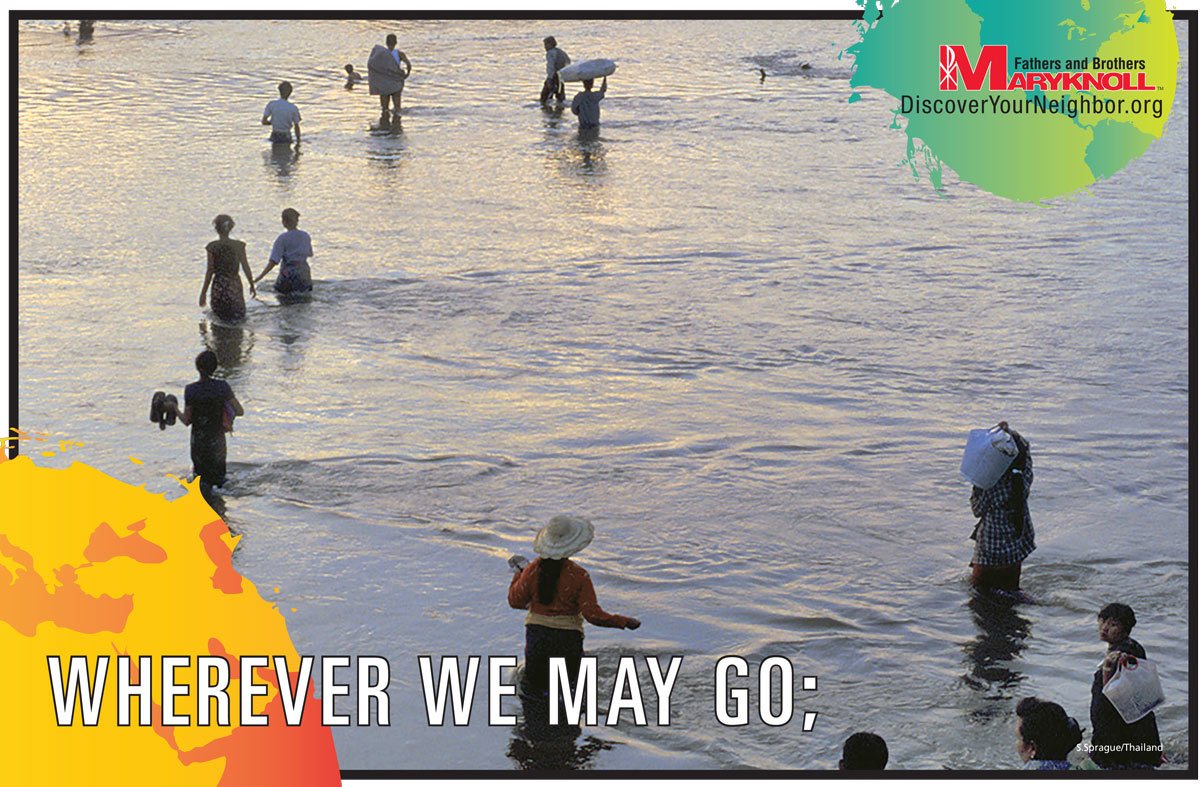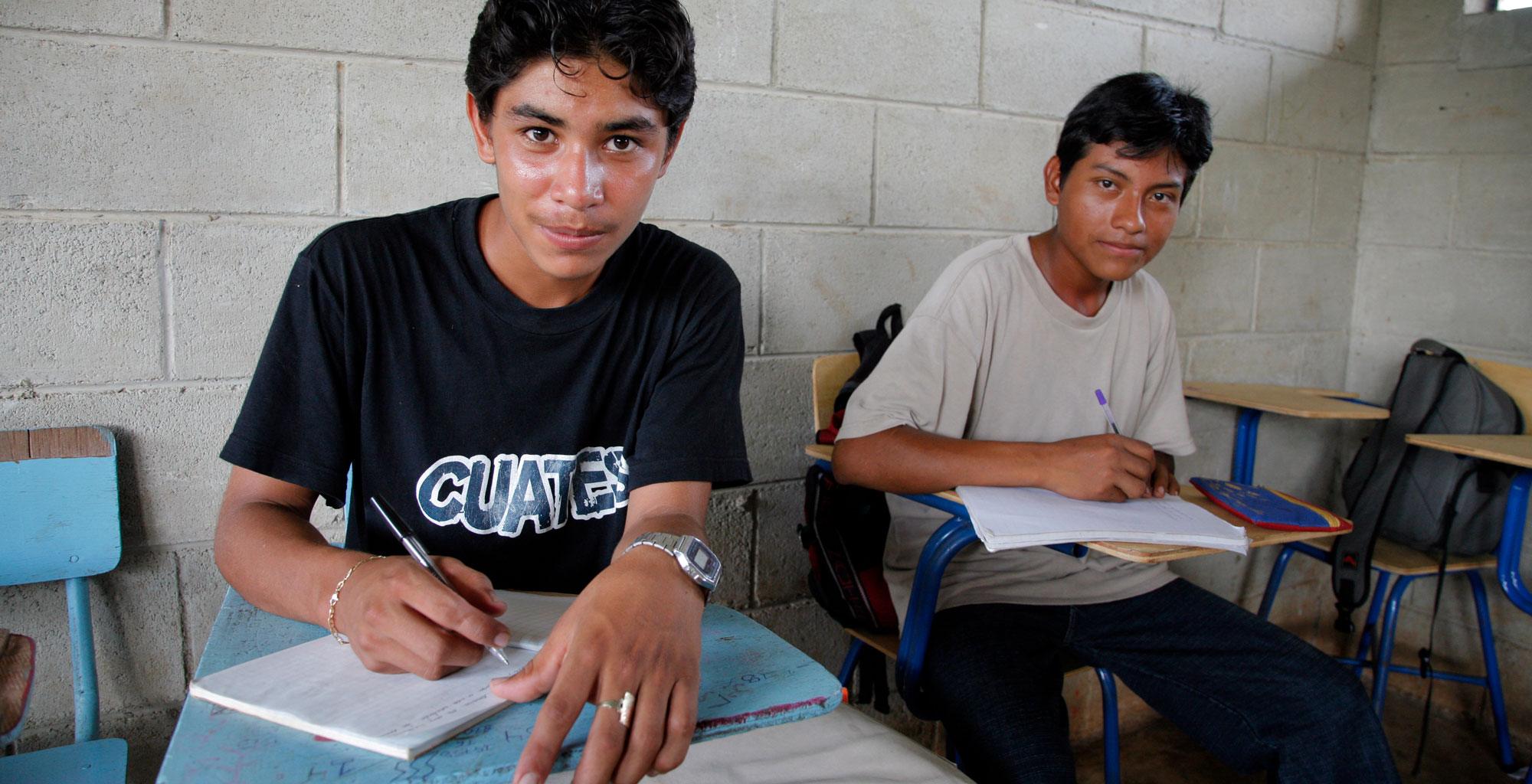
Download the:
Solidarity is one of the themes of Catholic Social Teaching (CST). Solidarity inspires us to recognize that we all belong to one human family and depend on that family to live healthy, meaningful lives. Regardless of differences in what we look like or where we come from, we are all sisters and brothers: we are all God’s children.
The Gospel calls us to create a society in which all people are cared for and loved. One way to live in solidarity is by considering what others need, and not simply what we want. In CST, this is known as the “common good”.
Read the below story:
A MIGRANT JOURNEY
When Elvis Garcia Callejas was 15 years old, he had to leave his home country of Honduras and come to the United States alone. Because he had no family in the United States, he had to stay in a detention center in El Paso, Texas.
One day, he was adopted by a Catholic family named the Tobins. They helped him go to school. When he grew up he wanted to help young people like himself who had immigrated from another country. He remembered that when he was younger playing soccer helped him adjust to his new country, because children in Honduras and other countries around the world also play soccer. So he started a soccer team for teenagers who had recently arrived as immigrants or refugees to the United States.
“Many of these kids found themselves forced to leave their country,” he explained. “Soccer is something these kids understand, in a country where nothing else looks familiar. On the field they can forget about the problems they’re going through. They can be themselves without being judged.”
Review as a Class:
- How old was Elvis he when he traveled to the United States?
- Who did he travel with?
- What happened when he got to the United States?
- Did anyone help him? How?
- How does he help other children today?
Discuss: Why do you think Elvis chooses to work with children who are immigrants? How does soccer help the young people that Elvis works with? What problems do you think soccer helps the kids he works with forget about? Why do you think the kids he works with might feel “judged” when they move to a new country?
Extension Question: What are some activities you could do in your school, community, or parish to welcome others?
THINK ABOUT IT
Discuss: What does the word “include” mean? What does it mean to “welcome” someone? What are some of the times and places that we include and welcome other people (games, conversations, parties, in our homes, etc.)?
Brainstorm as a class: Think of all the different ways to make other people feel welcome and included. As students come up with ideas, invite everyone to turn to their classmates and act out the idea (i.e. handshake, wave, smile, etc.).
For older students: Give each student a sticky note or small piece of paper. Have them write or draw a way to make someone feel welcome and included (tell them they cannot use the word welcome). When the students have written their ideas have them say or do the action they have on their paper. Post them on a board or make a collage with all the ways to say welcome. On top of board/collage write, “Welcome, Neighbor!”
GIVE THANKS AND PRAISE
Create a box, or some sort of container that has the following words on or by it: “Thank you, God, for all the people who are nice to us and make us feel comfortable in new places.”
Have each student think of someone who included them or welcomed them into a class, group, or activity. Give each student a small piece of paper and have them write the name of the person that welcomed them. When everyone is done writing have the students put the paper with the name on it in the box/container.
As a class, pray the words: “Thank you God for all these people who were nice to us and made us feel comfortable in a new place.”
EXTENSION
Discuss Jesus tells us to love our neighbor. What are ways that we can better welcome someone who is new to our school or community; or maybe someone who does not feel included in our class or school.
This is a call and respond prayer. First, teach the children the response, “You are Welcome”.
Remind students that when we pray, we are talking to God. Tell them that you will read the first part of the prayer, and when you raise your arms they will all say the response. (Remember to raise your arm during the response!)
Teacher: Thank you God. When you love and accept us just the way we are, you say to us…
Response: “You are Welcome.”
T: When we meet someone new or who seems different than us, remind us to say to them…
R: “You are Welcome.”
T: When we see someone being treated badly because they are new or other people think they’re different, help us say to them…
R: “You are Welcome.”
T: When someone is not being included, help us say to them…
R: “You are Welcome.”
T: Today help us love everyone the way you love us, and help us say to all people…
R: “You are Welcome.”
Amen
What’s The Big Idea?
We recognize Christ in both those who migrate and those who welcome the stranger. The story of our faith is in many ways a story of migration. Abraham and Sarah crossed borders to find a new home; the Israelites sought refuge in Egypt and later fled from slavery to the promised land; Mary and Joseph left their home as refugees to avoid violence against their family.
As the bishops of the US and Mexico together remind us, God calls for genuine communion and solidarity between those who migrate and the communities and nations which receive them.
Learn what else the US Bishops have to say in their pastoral letter, Welcoming The Stranger Among Us: Unity In Diversity.
How to Talk About It with Kids
It can be difficult to move to a new neighborhood, city, or country where we don’t know many people. Sometimes we may look different than other people or speak a different language. In the Bible there are lots of stories about people having to go to another place, and these stories show us that God is always with us and loves us no matter where we are. They also teach us that God asks us to welcome people we don’t know or seem different than us. Our Bishops tell us that people need to come together and welcome each other. They help us understand that Jesus is in the person who needs to be welcomed and in the person who welcomes others.
As the bishops of the US and Mexico together remind us, God calls for genuine communion and solidarity between those who migrate and the communities and nations which receive them.



